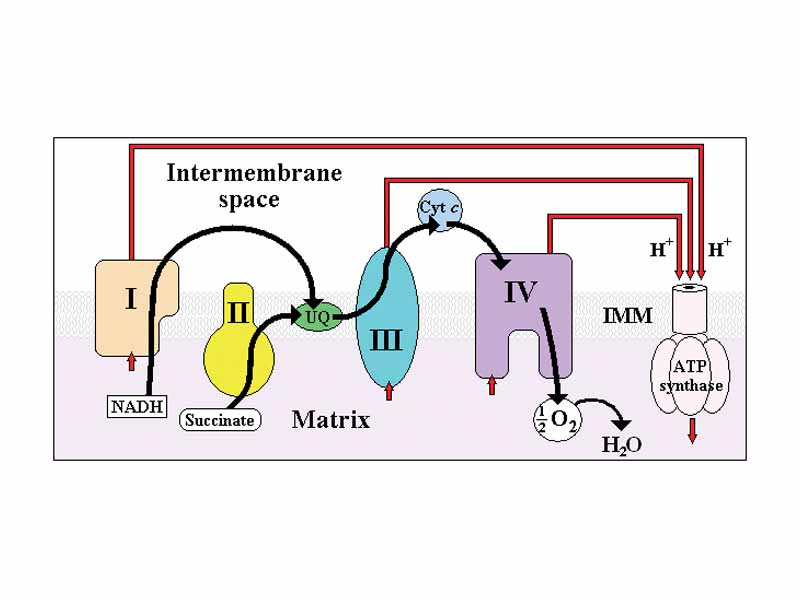The respiratory assemblies that carry out oxidative phosphorylation are located on the inner membrane of the mitochondria. The citric acid cycle is carried out in the matrix. The inner membrane is impermeable to nearly all ions and polar molecules. The respiratory assemblies carry out the oxidation of NADH and FADH2 (and the reduction of O2) which is coupled to the generation of a proton gradient across the inner membrane of the mitochondria. In other words, the free energy of oxidation of NADH by O2 is converted to the free energy of the proton gradient (which is combined free energy of diffusion, pH gradient, and electrostatic potential energy. The subsequent returning flow of protons into the matrix is itself coupled to phosphorylation. The proton gradient couples oxidation and phosphorylation.
Ultimately what is occurring through oxidative phosphorylation is that the electron transfer potential of NADH or FADHs is converted to the phosphate transfer potential of ATP. Electrons begin within chemical bonds in NADH (and FADHs), and by extension the original nutrient molecules because little energy change occurs upon their receipt in glycolysis, pyruvate decarboxylization, and the citric acid cycle by these electron carriers. These electrons will find themselves in the final state within new chemical bonds in which they have been captured by very electronegative oxygen which will have drawn them in close to its powerful nucleus with concomitant substantial decrease in electrostatic potential energy. The matter involved (nutrient molecules, NADH, O2) undergoes a free energy decrease which is coupled by the electron transport system to the establishment of the proton gradient across the inner membrane (a free energy increase). The release of protons through the inner membrane (free energy decrease) in turn is coupled with phosphorylation of ADP (free energy increase). The ATP formed can them be hydrolyzed (free energy decrease) coupled to myriad biochemical processes necessary for life.
Ultimately what is occurring through oxidative phosphorylation is that the electron transfer potential of NADH or FADHs is converted to the phosphate transfer potential of ATP. Electrons begin within chemical bonds in NADH (and FADHs), and by extension the original nutrient molecules because little energy change occurs upon their receipt in glycolysis, pyruvate decarboxylization, and the citric acid cycle by these electron carriers. These electrons will find themselves in the final state within new chemical bonds in which they have been captured by very electronegative oxygen which will have drawn them in close to its powerful nucleus with concomitant substantial decrease in electrostatic potential energy. The matter involved (nutrient molecules, NADH, O2) undergoes a free energy decrease which is coupled by the electron transport system to the establishment of the proton gradient across the inner membrane (a free energy increase). The release of protons through the inner membrane (free energy decrease) in turn is coupled with phosphorylation of ADP (free energy increase). The ATP formed can them be hydrolyzed (free energy decrease) coupled to myriad biochemical processes necessary for life.

